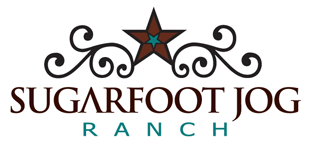During our interaction with our clients and horses, EAL Facilitators take on many roles. One moment we may be in facilitation mode, keeping a group on track to accomplish certain objectives. At times we step up as trainers, presenting specific content that is relevant to the group. Sometimes we are put in the position as a coach, encouraging clients to consistently take action and then holding them accountable for the actions they agree to perform. Or depending on the desired outcome of a group and the skills and experience of the facilitator, the facilitation style may be a mix of all of the above. What I have observed repeatedly, is that we can get so caught up in the process of facilitation that we overlook what I consider the most important role of all – that of Horse Handler. Whether I am teaching natural horsemanship lessons, starting a colt, doing EAP work with at-risk youth, or working as a Master Trainer and teaching the E3A model, my number one concern before anything else is SAFETY. It is imperative that, as an Equine Assisted Facilitator, we have a strong working knowledge of equine body language. We need to be able to read our horse partners and collect the information that they are reflecting back to us. Only then can we relate how the horses’ reactions mirror what our human clients are doing. We then can take this information and help facilitate a positive change in our clients’ lives. Understanding equine body language is critical to successful horse-human interactions while doing Equine Experiential Education. Many horse accidents are a result of not reading the horse’s body language. It is the failure to communicate in a way that the horse understands – by not speaking the horse’s language – that so often causes problems between people and horses. Great horsemen work with horses using horse psychology. They learn to have a two-way relationship with their horses where they start to look at things from the horse’s point of view. They understand herd culture and how horses communicate with each other. And they use this knowledge to not only become part of the horse’s herd but to become the horse’s natural leader. At the start of each equine assisted experience, basic horse safety is taught to the participants, but ultimately the responsibility for everyone’s safety falls on us. Our ability to handle safety builds confidence in both the clients and the horses and also gives us added credibility as facilitators. While partnering with horses, we owe it to our clients to be at the top of our game while doing this work. That means we need to be very savvy with our horse handling skills. We also need to stay focused on the importance of reading the horse’s behavior in E3A facilitation. If you can learn to read a horse, nothing the horse does will ever surprise you. By interacting with the horses using horse psychology, you will learn how to operate more like a prey animal……knowing what is going to happen before it happens. You will be able to predict how a horse is going to react and if it is not a desired behavior, you will be able to interrupt the pattern so that the situation does not escalate. Reading a horse’s body language can help you understand the horse’s mind. The more that I have studied horses’ body language, the more fascinated I become as to the depths and the degrees of it. Equine body language can be pretty easy to understand superficially, but it is actually a very complex topic. During our E3A training, we are given a good overview, working knowledge and a starting point to study the herd culture, horse body language, and the horse-human connection. It is up to us as facilitators to continue studying and learning so that we can offer our clients a safe learning experience. Partnering with horses is a wonderful and rewarding way for our clients to learn new skills. Like many activities, working with horses involves some degree of risk. Horses are large, powerful animals and easily capable of injuring the participants that are working with them. By being the natural leaders of our herd and by being able to read our horses and handling any situation that arises, we can help minimize those risks.
September 2015 E3A Newsletter.
